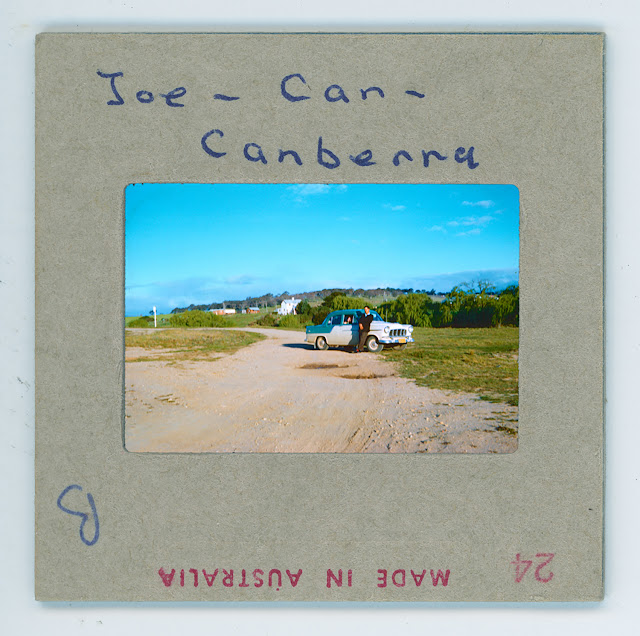Photography & Mixed Media Review | Brian Rope
‘hand/made/held/ground’
& Made in Australia Series II | Brenda L. Croft
Canberra
Museum & Gallery | Until 22 January 2022
‘hand/made/held/ground’ is a major body of work by a leading contemporary artist, Brenda L. Croft, a proud Gurindji/Malngin/Mudburra woman whose background also includes Australian, Chinese, English, German and Irish heritage.
This mixed media installation explores Croft’s intimate patrilineal
relationship, and her return to her father’s, and her own, Country; sharing
something of that lineage connection and her journey. It reimagines and
honours customary objects - jimpila (spearhead) and kurrwa (stone
axe) - created on their Gurindji homelands in the Northern Territory.
Contemporary representations on display reflect ancestral journeys - undertaken
on traditional homelands, and returning home.
When, and who by, the stone axe was created is unknown. However, it is known that the axe survived over 130 years of pastoral impact prior to being found by Croft when she visited the remote site where it was.
The spear tip was given to Croft under temporary care by a supporter (Lyn Riddett) of the Wave Hill walk-off led by Vincent Lingiari. Riddett received the spear as a gift from an Elder at Daguragu in 1971. In the following years, the tip of the spear was accidentally broken before it was able to be repatriated to the Gurindji community, via Croft.
Whilst caretaker of the spear, Croft repaired it with wax and had a wax
mould made of it, along with a mould of the stone axe. With permission from
family and community members, she used those moulds to create multiple copies
of these significant cultural objects - black and red lead crystal, clear and
uranium glass cast stone axes and spear tips.
It is these copies, displayed on a combination of new and aged steel bases echoing steel bore water tanks, that we see in this exhibition. Each is lit individually from within revealing various colours, their configuration representing constellations in a night sky.
 |
| Photographer © James Henry. Image courtesy Brenda L Croft and Niagara Galleries. |
As well as the kurrwa and jimpila pieces, large satellite images displayed on the gallery walls map journeys embarked on by Croft, sometimes alone and other times accompanied by family and Gurindji community members. These maps, together with the axe and spear tip copies, reveal a connection between land and sky. As the lights in the moulds pulse on and off, their beating synchronises with ancient footsteps on the earth and symbolises the beating hearts of the objects’ owners.
In an adjacent space to that displaying ‘hand/made/held/ground’, Canberra Museum and Gallery (CMAG) is showing eight works from Croft’s earlier ‘Made in Australia II’ series, held in its own collection. This is an interesting and clever juxtapositioning of two sets of artworks.
Made in
Australia II was
produced by Croft to honour her mother, who advocated for social equity at a
local level, while also ensuring her children were proud of their heritage. A
non-Indigenous woman, Dorothy Jean Croft broke from tradition in Sydney - she
found love with a Gurindji/Malngin/Mudburra man, Joseph Croft. They married and
raised a family together, living in numerous regions of Australia, including
Canberra.
The artist Croft has celebrated her mother’s story by scaling up her (mother’s) original 1950s-60s vividly coloured 35mm Cibachrome slides to giant size photographic prints that speak to the strength and potency of her parent’s relationship - played out quietly in this heart of the nation.
 |
CROFT 21. Civic Centre Canberra 1959 - Made in Australia II Series |
 |
CROFT 24. Joe - Car, Canberra - Made in Australia II Series |
 |
CROFT 44. Joe & Snow 3 Mile Lake - first snowfall ANZAC - 1960 - Made in Australia II Series |
Together, these two bodies of Croft’s work celebrate both the male and female lines of her kinship stories, whilst also shedding light on some of our nation’s tensions: a story of lives impacted by stolen generations, returning to traditional homelands, the assertion of women’s independence and the breaking of class and racial barriers.
Both series wonderfully pay tribute to her mother’s memory.
This review was published in The Canberra Times of 20/12/21 here. It is also on the author's own blog here.

